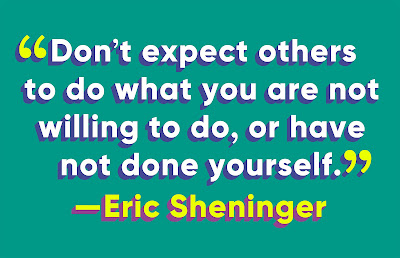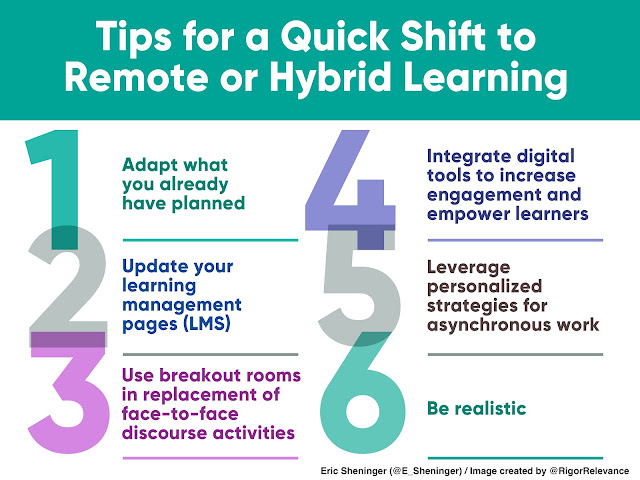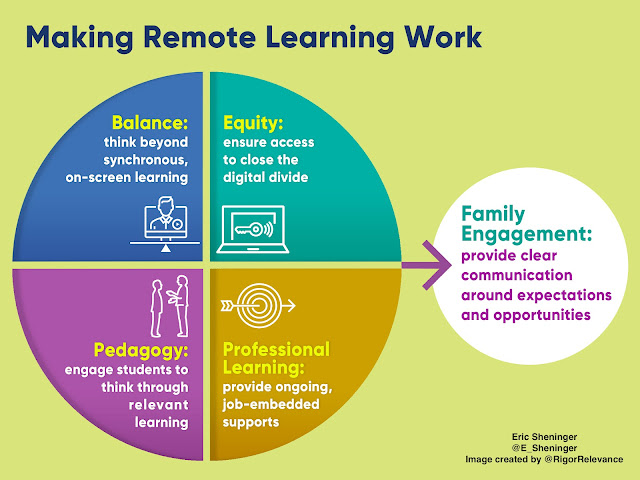One of the most powerful teaching and leadership strategies is the act of modeling. It goes beyond just telling people what to do by instead showing them how to do it as a means to either support learning or change. In the classroom, modeling aids in making concepts clear where students learn by observing. I shared the following in Disruptive Thinking in Our Classrooms:
Modeling is a pedagogical strategy whereby the teacher or student(s) demonstrates how to complete tasks and activities related to the learning target. It describes the process of learning or acquiring new information, skills, or behavior through observation rather than through trial-and-error attempts or direct experience. Learning, in many cases, results from observation (Holland & Kobasigawa, 1980). Modeling is one of the most effective ways to learn any new skill or knowledge (Bandura, 1986). Showing learners how to solve a problem or tackle a concept is often much more helpful than merely telling them.
There is an array of strategies that can be used. Below is a quick list:
- I Do, We Do, You Do
- Think Alouds
- Explicit Modeling
In terms of leadership, example is everything when it comes to empowering people to change. Telling people what to do might work in the short term but can lead to instability down the road. While the "why" might initially motivate, the "how" empowers others to take action. I shared the following in Digital Leadership:
Effective leaders don't tell people what to do. Instead, they take them where they need to be. Modeling is one of the most powerful strategies to initiate and sustain change. For example, if you want your staff to use a communications tool like Remind regularly to keep students and parents abreast of assignments, then you should be using social media daily to communicate with stakeholders. This is just one example. Leading professional learning, teaching a lesson, participating in a PLC (professional learning community), or flipping a faculty meeting are all ways that leaders can model the same practices that they want their staff to embrace.
I have been doing a great deal more modeling in my coaching role as of late. Whereas in all my keynotes, presentations, and workshops, I provide evidence (pictures and videos) from the field that illustrate changes to practice, a coaching cycle gives me more time to roll up my sleeves and model. The bottom line is that if I can only talk about it, then I shouldn't be coaching or leading the professional learning. In my opinion, this statement pertains to any author or speaker. As I late, I have successfully modeled the following:
- Taught multiple 4th and 5th-grade classes to demonstrate how technology can be used to empower student voice as part of an SEL lesson.
- Created and taught a model lesson to K-12 educations on voice and choice
- Developed and had educators engage in a personalized learning task. The options included a choice board, playlist, or one-on-one conferencing with me to get feedback on lesson and unit plans. This was a direct follow-up to the model lesson for educators.
- Worked with a high school principal to create an asynchronous course in Google Classroom on personalized learning. I created a template while providing sample activities and questions as a foundation. Creating the course was in response to how time-strapped educators are while also expressing a desire for meaningful professional learning.
- Conducted numerous non-evaluative observations and walk-throughs to illustrate how I would provide feedback to teachers.
No matter your role, always look to model what you expect of others. In the words of Frank Sonnenberg, "You send a message by what you say and what you do. If words aren't supported with consistent actions, they will ring hollow."






